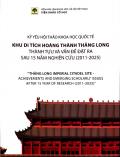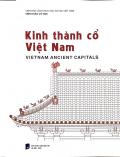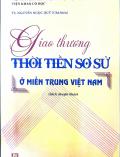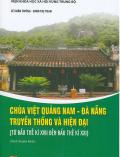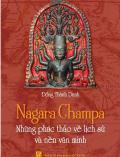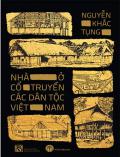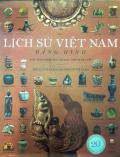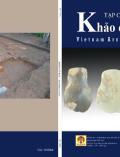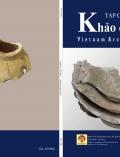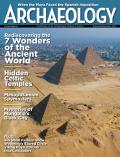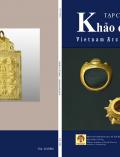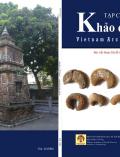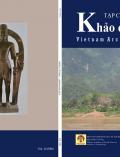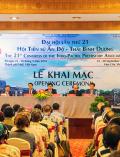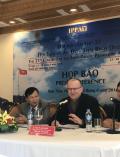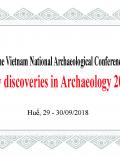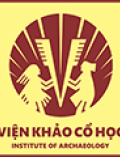Trafficked!: New Research Defining and Exposing Southeast Asian Cultural Property Crime
1Damien Huffer, 2Rhayan Melendres
1Department of Archaeology & Classical Studies/Osteological Research Laboratory, Stockholm University, SE-106 91 Stockholm, Sweden.
2Archaeological Studies Program & UP Pampanga, University of the Philippines, Diliman, Quezon City, Philippines
In the four years since the previous IPPA, awareness and exposure of the antiquities trade from, and within, Southeast Asia, has only increased. As Southeast Asian and Western countries continue to adjust legislation and new smuggling cases are investigated, trafficking networks continue to evolve. More qualitative and quantitative information is needed to understand current manifestations of cultural heritage destruction region-wide, the extent that each country’s current legislation prevents or allows for domestic collecting, and how Southeast Asian artefacts move on global markets. This panel seeks presentations that discuss new field or museum based research in source or demand countries, including new online market analyses of sales data on e-commerce or social media platforms. Presentations can focus on terrestrial and underwater cultural property, human remains, new threats to monuments, detecting forgeries, efforts to disrupt the market, or how archaeological data is (or is not, or can be) used to change or enforce country or regional legislation. We’d be especially interested in presentations that connect new data with community outreach and heritage education efforts.
1Department of Archaeology & Classical Studies/Osteological Research Laboratory, Stockholm University, SE-106 91 Stockholm, Sweden.
2Archaeological Studies Program & UP Pampanga, University of the Philippines, Diliman, Quezon City, Philippines
In the four years since the previous IPPA, awareness and exposure of the antiquities trade from, and within, Southeast Asia, has only increased. As Southeast Asian and Western countries continue to adjust legislation and new smuggling cases are investigated, trafficking networks continue to evolve. More qualitative and quantitative information is needed to understand current manifestations of cultural heritage destruction region-wide, the extent that each country’s current legislation prevents or allows for domestic collecting, and how Southeast Asian artefacts move on global markets. This panel seeks presentations that discuss new field or museum based research in source or demand countries, including new online market analyses of sales data on e-commerce or social media platforms. Presentations can focus on terrestrial and underwater cultural property, human remains, new threats to monuments, detecting forgeries, efforts to disrupt the market, or how archaeological data is (or is not, or can be) used to change or enforce country or regional legislation. We’d be especially interested in presentations that connect new data with community outreach and heritage education efforts.
Thông báo
Thứ năm, 11 Tháng 12 2025- 17:31
Thứ hai, 29 Tháng 9 2025- 18:20
Thư viện
- Tác giả: Trung tâm Nghiên cứu Kinh Thành, Viện Khảo cổ học
- Nxb: Khoa học xã hội - 2025
- Số trang: 592tr
- Khổ sách: 24x29 cm
- Hình thức bìa...
- Tác giả: Trung tâm Nghiên cứu Kinh Thành, Viện Khảo cổ học
- Nxb: Khoa học xã hội - 2025
- Số trang: 255tr
- Khổ sách: 24x 29cm
- Hình thức bìa...
- Tác giả: TS. Nguyễn Ngọc Quý (chủ biên)
- Nxb: Khoa học xã hội - 2025
- Số trang: 288tr
- Khổ sách: 24cm
- Hình thức bìa: mềm
- Tác giả: Lê Xuân Thông - Đinh Thị Toan
- Nxb: Khoa khoa học xã hội - 2024
- Số trang: 394tr
- Khổ sách: 16 x 24cm
- Tác giả: Đổng Thành Danh
- Nxb: Khoa học xã hội - 2023
- Số trang: 248tr
- Khổ sách: 16 x 24cm
- Tác giả: Louis Malleret
- Nxb: Tổng hợp TP.Hồ Chí Minh - 2023
- Số trang: 567tr
- Khổ sách: 16 x 24cm
- Tác giả: Nguyễn Chí Bền
- Nxb: Khoa khoa học xã hội - 2024
- Số trang: 417tr
- Khổ sách: 16 x 24cm
- Tác giả: Nguyễn Khắc Tụng
- Nxb: Khoa học xã hội - 2023
- Số trang: 695tr
- Khổ sách: 16 x 24cm
- Tác giả: Đông A
- Nxb: Đại học sư phạm-
- Số trang: 660tr
- Khổ sách: 25x30cm
- Hình thức bìa: cứng
Tạp chí
Dày 100 trang, khổ 19x27cm
Dày 100 trang, khổ 19x27cm
Dày 100 trang, khổ 19x27cm
Dày 100 trang, khổ 19x27cm
November/December 2025 - Archaeology Magazine
Dày 100 trang, khổ 19x27cm
Dày 100 trang, khổ 19x27cm
Dày 100 trang, khổ 19x27cm
Dày 100 trang, khổ 19x27cm
Tin tức khác
24 Th9 2018 06:12
22 Th9 2018 11:09
28 Th8 2018 15:04
15 Th8 2018 13:10
25 Th7 2018 04:21
25 Th7 2018 04:19
Copyright © 2016 by khaocohoc.gov.vn.
Thiết kế bởi VINNO
Tổng số lượt truy cập: 10399178
Số người đang online: 7

